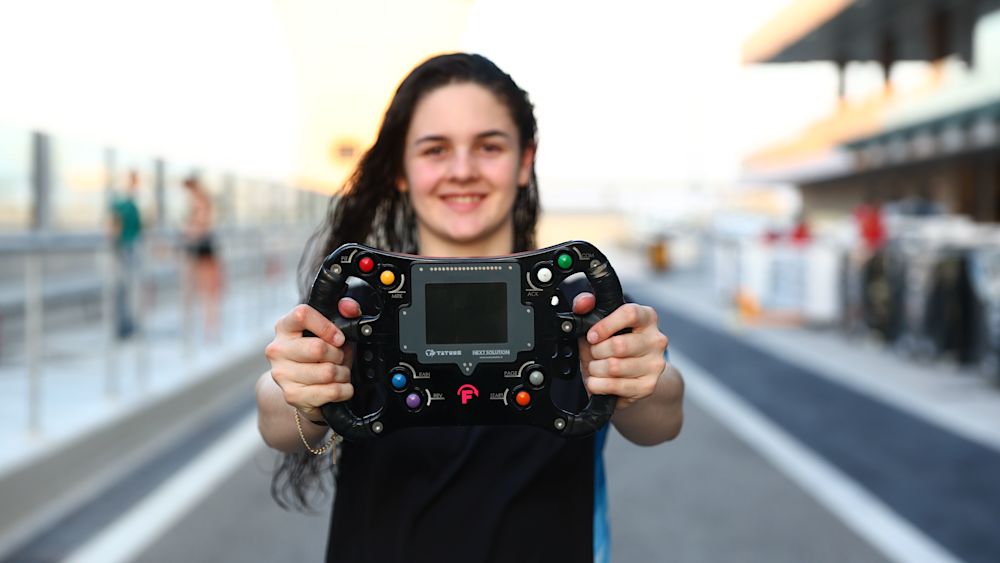






Feature

If you found yourself sat in an F1 ACADEMY car, you’d quickly realise that the steering wheels used are a lot more complex than those found in everyday cars on the road.
Featuring eight buttons labelled on the front and two paddles on the back, Abbi Pulling talks us through their uses and how their importance shifts depending on the many different situations drivers face whilst behind the wheel.
“Starting on the back, this is the quick release (the yellow disc),” she begins. “So that’s where it connections on and off and also, where the electronics connect. The flappy paddles for up and downshifts — fairly simple. A label to say what steering wheel this is, so this is the steering wheel for car #1, so we don’t get mixed up.
“Then going on to the front, we have the LED lights which do the gear shift. When we’re at a certain RPM, it will tell us to upshift. Then there’s the screen which has 20 or 30 pages, but for us drivers, we’ll only use two. We used the main page, which tells us the gear and on a different page, we check the brake bias. So, that’s an important tool for us to use during a Practice session.
“We also have the comms button (in green). This is the radio button — press this once and the radio will be open until you press it again and that will close it. The back button (in white) is for first getting into first gear. Press this button, press that from neutral and it goes into first gear and then you press it again to go into neutral from the other way.
“This is the page button (in grey), it just goes through the pages on the screen and then, you hold it and it resets back to the first page. The mark button (in yellow), this button marks a position in the data set. So, say if we had a weird noise on one lap, we’ll press this or we had some bottoming or anything unusual. We’ll press this and you can find it in the data really easily.
“The pit limiter (in red). We’re limited to 60 KPH, and F1 is 80 KPH. We use that for safety reasons in the pitlane, we’ve got to be at a regulated speed. Rain light (in blue), so when it’s raining, we have to use this or whenever we have wet tyres on, we have to have a rain light on. It can also be a good way to tell drivers I’m getting out of the way for you or thanks — it’s like a little way we can chat to each other.
“The start button (in orange), we have a switch in the car that goes P0, P1 and P2. P1 is the car turning on, and then P2 is the ignition on. When the ignition is on, we can then start the engine. We also use that button to stop it. Then there’s the reverse button (in purple). We’ll go into neutral by pressing the white button and then, we’ll press the reverse button and backshift from neutral into reverse. If you’re using that, you’re not having a good day!
“To put it on inside the car, there’s the column which has a few different notches and you need to line up the top of the steering wheel, which will always have the flat notch, pull the yellow disc, wiggle it on, release and make sure it’s secured.”